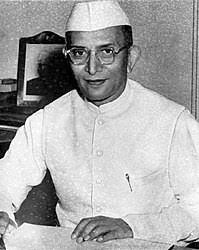The First Administrative Reforms Commission of India was established in 1966 by the Government of India under the chairmanship of Morarji Desai, who was then the Deputy Prime Minister and Minister of Finance. The commission was establishment to address administrative inefficiencies and improve the functioning of the government machinery.

Table of Contents
Objectives and Scope of First Administrative Reforms Commission
The First ARC had a broad mandate to comprehensively review and recommend reforms in various aspects of public administration to make it more efficient, responsive, and accountable. Its key objectives included:
- Organizational Structure and Functioning: The commission examined the organizational setup of government departments and agencies, seeking to ensure that they were structured in a way that facilitated effective service delivery and coordination.
- Personnel Management: The First ARC assessed issues related to the recruitment, training, promotions, and career progression of civil servants. It aimed to ensure that the civil service attracted and retained capable individuals who could contribute effectively to governance.
- Public Service Delivery: The commission focused on improving the delivery of public services to citizens. This included streamlining procedures, reducing bureaucratic hurdles, and enhancing the efficiency of government operations.
- Financial Management: The First ARC looked into matters related to budgeting, financial accountability, and expenditure management within the government. It aimed to suggest measures to ensure prudent use of public funds and prevent wastage.
- Decentralization and Local Governance: Recognizing the importance of local governance, the commission explored ways to empower local governments and promote decentralized decision-making. This aimed to bring governance closer to the people and encourage community participation.
Recommendations and Impact
The First ARC submitted its report in 1969, and its recommendations led to significant reforms and changes in the Indian administrative system. Some of the notable outcomes include:
- Civil Service Reforms: The commission’s recommendations influenced the modernization of recruitment procedures, performance evaluation, and career progression within the civil services. This contributed to a more efficient and professional civil service.
- Administrative Streamlining: The ARC’s suggestions led to the simplification and streamlining of administrative procedures, reducing bureaucratic delays and improving service delivery.
- Decentralization: The commission’s emphasis on decentralization paved the way for constitutional amendments that granted more autonomy and power to local governments. This marked a significant step toward strengthening grassroots democracy.
- Financial Management: The ARC’s recommendations contributed to improved financial management practices within the government, leading to better budgeting and resource allocation.
Legacy: The First Administrative Reforms Commission’s work laid the foundation for subsequent administrative reforms in India. Its recommendations initiated a process of change that continues to influence governance practices and policies in the country. While not all of its recommendations were fully implemented, the commission’s insights and proposed reforms remain relevant and continue to shape discussions on administrative efficiency and accountability.
It’s important to note that developments may have occurred since my last update in September 2021, so I recommend checking with official government sources or relevant publications for the most current and detailed information on the First ARC and its impact.
Thanks for reading the article on First Administrative Reforms Commission.